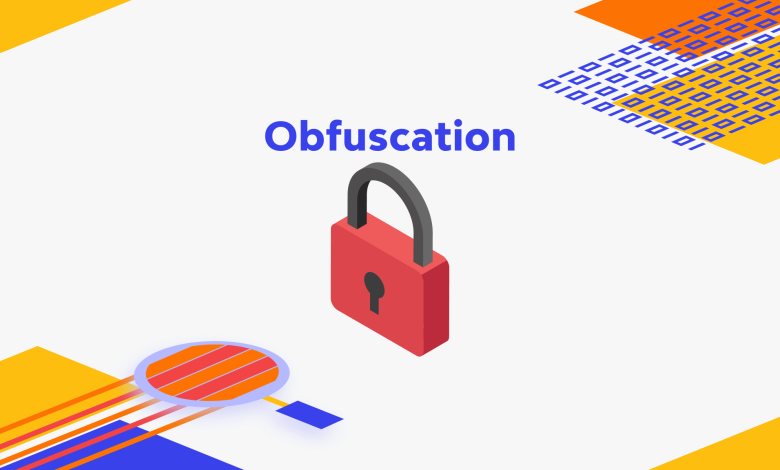An overview about code obfuscation

Obfuscation means to make something difficult to understand. For protecting trading secrets or intellectual property obfuscation of programming code takes place. It prevents an attacker from reverse engineering.
Encrypting all or some part of the programming code is one form of obfuscation method. The tool known as obfuscator is going to convert a straight forward code into a program. Though it may work in the same manner, but it may be complex and difficult to understand. The malicious code writers would also be using such methods to ensure that the attack mechanisms are not detected by anti -malware tools.
The methods of obfuscation could be used to undo obfuscation or re- engineer. A common technique used is programme slicing that would narrow down the program code into relevant statements to a particular point in the program. Code obfuscation aims to make re- engineering difficult and worth the trouble.
The work of obfuscation
The concept of obfuscation in computer code tends to use complex phrases along with redundant logic that would make the reader difficult to grasp things. The objective would be to distract the reader with complex syntax, and would make it difficult to figure out the true content of the message.
For a computer code, a reader can be a computing device, a person or any other program. It would be also the method to be fooling around anti- virus tools to interpret code rely on digital signatures. They would be able to automatically reengineer code, obfuscation does make it really difficult for such programs to undertake decoding.
The process is not about altering the content of the original code, but makes the presentation and the delivery method complex. It is not going to alter how the programming is working and its output. This method would be really difficult to follow with human eye.
Techniques of obfuscation
There are several methods used in obfuscation. For creating a layered effect multiple layers are being used. An example is if a program is written in software language, like Java and C ++ the instructions would be really difficult to interpret. With C it is more difficult to obfuscate that would be really difficult for the people to be working around. Some of the popular techniques of obfuscation are as follows
- Packing- this would compress the entire program and makes the code unreadable
- Meta data or unused removal of the code- Meta data and unused code removal is bound to provide extra information to the code pretty much like an annotations in a word document. This may help them, read and debug it. By removing unused code and meta data this would leave the reader with less information about a program and its code.
- Control flow- the code that is decompiled, follows the pattern of a spaghetti logic. This turns out to be unstructured and hard to manage the code where you obfuscate the line of thought. Any type of results from this code are not clear, and by looking at it would be really difficult to measure the exact point of contact.
- Anti- debug- A legitimate software engineer or a hacker with the help of debug tools would be checking the code on a line by line basis. If these tools are not there the software engineers will not be able to detect problems with such a code. The IT security companies may use anti- debug tools to figure out when a debug program is not part of an attack. It is possible at the end of a hacker to figure out when a debug tool is being used and the type of changes that is being made to the code.
- String encryption- with the method of encryption you tend to hide the strings, and when you need to run the program only the values have to be reinstated. What it does is that it would make it difficult to go on to a program and check out the particular strings. Apps like Appsealing tend to be a saving grace and do a great job in this process.
- Renaming- the obfuscator would alter the methods along with the names of the variables.
The benefits of obfuscation
There are some definite benefits of obfuscation as follows
- Secrecy- the technique hides the information in a code. For legitimate organizations this is a benefit looking to protect the code from competitors or attackers. The bad actors are known to capitalize on the power of obfuscation to hide their malicious code.
- Efficiency- there are some obfuscation methods, in the form of unused code removal. It has an impact of shrinking the program that would make it less human intensive to operate it.
- Security- Obfuscation has an in developed security module, as it would be referred to as self- protection of the application. Rather than using an external security method, it would work with what is being protected. For applications that are operational in an untrusted platform it is suited best. The reason being it is known to contain sensitive information.
The method used to measure the success of obfuscation
To measure the success of obfuscation criteria the following indicators can be of help
- Expense- if the obfuscation is cost- effective, obviously it is going to be useful as compared to one that is expensive. More so when it is the case of scaling larger applications.
- Strength- the extent to which a transformed code may resist automated obfuscation, may attempt the strength. More the effort, time and resources to develop the code effective it will turn out.
- Complexity- More the layers of obfuscation that is added, complex is going to be obfuscation as it will be successful.
- Differentiation- the manner on how a code is different from an original one is an indicator of its differentiation. The ways by which you judge differentiation are the number of predicators that the new code contains. The higher levels of DIT that measures the code complexity. Higher the DIT more is the complexity of the program.




